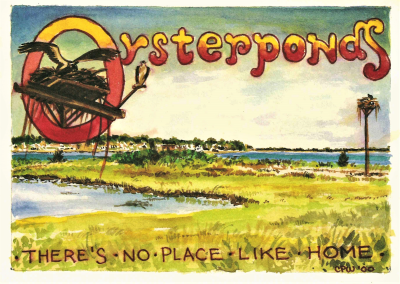
Long Island’s North Fork was first inhabited by people of the Algonquin Nation. Theirs was a 10,000+ year-old culture with a deep spiritual connection to land and sea; their name for the region, “Poquatuck,” means “open tidal river.”
The Town of Southold was founded in 1640 by a group of 13 families from the New Haven (Connecticut) Colony. At the time, Long Island had been given, in the form of a grant, to the Lord Stirling by King George. By 1661, their growing settlement was partitioned into three distinct areas: Occubogue (Aquebogue), Cutchogue, and Oysterponds. English settlers called this easternmost section “Oysterponds” because of the teeming shellfish ponds, which to this day produce some of the most acclaimed bivalves on the East Coast. The ponds formed a natural divide between “Upper Neck” in the west (now East Marion) and “Lower Neck” in the east (now Orient). In 1826 the two formally split into two separate communities; the Upper Neck became Rocky Point and Lower Neck stayed as Oysterponds.
In 1836 Oysterponds applied to the US Post Office Department (USPOD) for a post office and was denied because the name was too similar to Oyster Bay, a Long Island town 75 miles to the west. The Department suggested Orient, because of the far-eastern location, and the community adopted the name in 1836.
Rocky Point faced a similar dilemma in the 1850s, when the USPOD rejected its application because the name was already being used by another Long Island community. A discussion among the townspeople ensued and Warren Griffing suggested Marion, after the famous Revolutionary War General Francis “Swamp Fox” Marion. Unfortunately, there already was a community by the name of Marion upstate, so the government came up with the name East Marion as a solution.